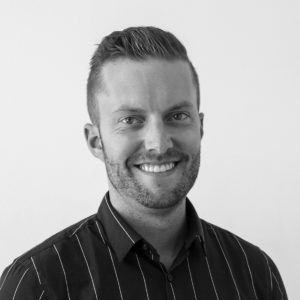Useful Resources For Learning And Development Leaders
The volume, velocity, and complexity of change require the workforce to be adaptable and innovative. In this article, we explore three books that were transformative for me and stand out as must-reads for individuals seeking to navigate the complexities of personal and professional development. First, "Hidden Potential" by Adam Grant delves into the untapped reservoirs of talent within individuals and organizations, providing invaluable insights into recognizing and harnessing latent abilities for unparalleled success. Next, David Epstein's "Range" challenges conventional notions of specialization, advocating for the power of diverse experiences in fostering creativity and adaptability. Lastly, "A Whole New Mind" by Daniel Pink serves as a guiding light for those navigating the shifting landscape of work, emphasizing the importance of right-brain thinking in the creative economy. These three must-reads collectively redefine the paradigms of talent recognition, skill development, and the very mindset required for success in an era of continuous change and innovation.
3 Must-Read Books For Learning And Development Leaders
"Hidden Potential" By Adam Grant
Adam Grant's "Hidden Potential" explores the concept of unlocking latent abilities within individuals and organizations. Grant, a renowned organizational psychologist, delves into the power of recognizing and harnessing the untapped potential that lies within people. He argues that by identifying and cultivating hidden talents, both individuals and businesses can achieve great success and innovation. The book provides insights into the ways leaders can create environments that foster creativity and empower employees to reach their full potential. Grant draws on real-world examples and research to support his ideas, offering practical strategies for unlocking secret powers in various aspects of life. "Hidden Potential" reinforces the idea that individuals and organizations can achieve great success by recognizing and nurturing hidden talents. For Learning and Development professionals, this means designing programs that encourage employees to explore and develop their unique strengths, creating an environment that values innovation and continuous growth.
Actionable Takeaways:
- Recognize and nurture talent.
Actively seek out the hidden talents of individuals within your team or organization. This involves understanding that everyone possesses unique strengths that may not always be apparent in their current roles. - Hire leaders that focus on the mission.
Leaders who focus on the mission and not their ego nurture successful teams that deliver enduring business outcomes. - Replace the corporate ladder with a lattice.
Enable team members to reach out to several leaders in the organization to seek feedback and support for their ideas. This approach ensures that good ideas that include calculated risk-taking have a chance to survive and not get shot down by one leader. - Hire differently.
Examine the trajectory of performance over time to uncover whether candidates have overcome adversity. Redefine success not by the highest peak the leader achieves but by the distance they traveled to get there.
"Range" By David Epstein
In "Range," David Epstein challenges the conventional wisdom that specialization is the key to success. Epstein argues that a broad range of experiences and skills, rather than early specialization, often lead to more creativity and adaptability. Drawing on examples from sports, business, and education, Epstein explores the benefits of a diverse skillset and a multidisciplinary approach. He makes a compelling case for the value of generalists in a rapidly changing world, emphasizing the importance of exploration and learning from different fields. "Range" encourages readers to embrace diverse experiences and take a more flexible and adaptive approach to their personal and professional development. It challenges the notion of early specialization, advocating for a broader range of experiences. Learning and Development professionals can draw inspiration from this approach by designing training programs that prioritize diverse skillsets, encourage exploration, and view failures as valuable learning opportunities.
Actionable Takeaways:
- Encourage exploration.
Don't rush into specialization too early. Allow individuals the freedom to explore various fields and interests before narrowing their focus. This can lead to a broader skillset and increased adaptability. - Embrace failure as a learning opportunity.
Understand that failure is a natural part of the learning process. Rather than discouraging experimentation, view failures as valuable experiences that contribute to growth and resilience. - Promote interdisciplinary thinking.
Encourage collaboration between individuals with diverse backgrounds and expertise. Cross-disciplinary collaboration can foster creative problem-solving and lead to innovative solutions. - Foster continuous learning.
Prioritize ongoing learning and development. Equip individuals with the tools and resources to acquire new skills throughout their careers, promoting a mindset of continual growth and adaptability.
"A Whole New Mind" By Daniel Pink
Daniel Pink's "A Whole New Mind" explores the evolving nature of work and the skills required for success in the 21st century. Pink argues that as left-brain analytical thinking becomes automated or outsourced, individuals need to cultivate right-brain creative thinking to stay competitive. The book introduces the concept of the "six senses," which include design, story, symphony, empathy, play, and meaning. Pink contends that individuals who develop these skills will be better equipped to thrive in the emerging creative economy. "A Whole New Mind" offers a roadmap for readers to enhance their creative abilities and adapt to the changing demands of the modern workplace, making a compelling case for the importance of right-brain thinking in our increasingly complex world. "A Whole New Mind" introduces the concept of right-brain thinking as essential in the evolving landscape of work. For Learning and Development professionals, this emphasizes the importance of incorporating creative and empathetic skills into training initiatives, fostering an environment where employees can thrive in the creative economy.
Actionable Takeaways:
- Develop right-brain skills.
Actively work on enhancing right-brain skills, such as creativity, empathy, and storytelling. This might involve engaging in activities like drawing, writing, or participating in exercises that stimulate these cognitive functions. - Embrace design thinking.
Incorporate design thinking into problem-solving processes. This involves approaching challenges with a focus on user experience, aesthetics, and innovative solutions that go beyond traditional analytical methods. - Cultivate empathy.
Understand the perspectives and feelings of others. Cultivating empathy enables better communication, collaboration, and the ability to create products and services that truly resonate with people. - Find meaning in work.
Encourage a sense of purpose and meaning in the workplace. Help individuals connect their work to a larger, meaningful context, fostering a sense of fulfillment and motivation.
Conclusion
These three books, "Hidden Potential" by Adam Grant, "Range" by David Epstein, and "A Whole New Mind" by Daniel Pink, collectively offer a profound perspective on L&D, particularly crucial for Learning and Development leaders because they underscore the significance of tapping into latent abilities, embracing diverse experiences, and fostering a blend of analytical and creative thinking.









